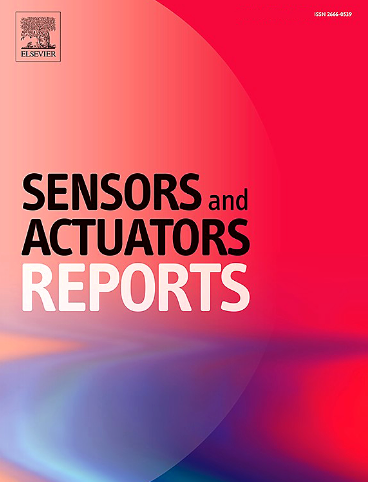纳米等离子体大孔钒酸铋在阿尔茨海默病诊断中的应用
IF 7.6
Q1 BIOTECHNOLOGY & APPLIED MICROBIOLOGY
引用次数: 0
摘要
有效监测人血清中的生物标志物对阿尔茨海默病的早期诊断至关重要,但由于环境复杂且含量极低,监测工作并非微不足道。本文构建了一种基于三维有序大孔(3DOM)钒酸铋(BiVO4)的电化学免疫传感器,用于淀粉样蛋白-β (a β)肽的超灵敏检测。该传感探针是在3DOM BiVO4表面由等离子体金纳米粒子(NPs)组成,并带有a β特异性抗体。由于纳米等离子体效应和周期性有序多孔结构,Au NPs/3DOM BiVO4光电极在模拟阳光照射下(AM 1.5G, 100 mW cm-2)表现出强烈的光散射效应和光致载流子分离增强的显著光电流响应。固定在Au NPs/3DOM BiVO4表面的a β特异性抗体与a β肽选择性配位,对a β具有超灵敏的检测效果,线性关系范围为50 fg-150 ng mL-1,检出限为25 fg mL-1 (S/N=3)。这项工作为构建具有功能识别节点的高度有序的大孔光电极铺平了道路,以检测神经系统疾病的早期诊断的生物标志物。本文章由计算机程序翻译,如有差异,请以英文原文为准。

Photoelectrochemical immunosensing of amyloid-β peptide using nanoplasmonic macroporous bismuth vanadate for Alzheimer's disease diagnosis
Effective monitoring of biomarkers in human serum is essential for early diagnosis of Alzheimer's disease, but it is nontrivial due to the complex environment and ultralow content. Herein, a three-dimensionally ordered macroporous (3DOM) bismuth vanadate (BiVO4)-based photoelectrochemical immunosensor is constructed for the ultrasensitive detection of amyloid-β (Aβ) peptides. The sensing probe is composed of plasmonic Au nanoparticles (NPs) on the surface of 3DOM BiVO4 with the Aβ-specific antibody. Attributing to the nanoplasmonic effect and the periodic ordered porous structure, the Au NPs/3DOM BiVO4 photoelectrode shows a significant photocurrent response resulting from the strong light scattering effect and the enhanced separation of photoinduced charge carriers under simulated sunlight irradiation (AM 1.5G, 100 mW cm-2). The Aβ-specific antibody immobilized on the surface of Au NPs/3DOM BiVO4 selectively coordinates with the Aβ peptide, resulting in an ultrasensitive detection for Aβ with a linear relationship range of 50 fg-150 ng mL-1 and a detection limit of 25 fg mL-1 (S/N=3). This work paves the way for constructing highly ordered macroporous photoelectrodes with functional recognition nodes to detect biomarkers for early diagnosis of neurological disorders.
求助全文
通过发布文献求助,成功后即可免费获取论文全文。
去求助
来源期刊

Sensors and Actuators Reports
Multiple-
CiteScore
9.60
自引率
0.00%
发文量
60
审稿时长
49 days
期刊介绍:
Sensors and Actuators Reports is a peer-reviewed open access journal launched out from the Sensors and Actuators journal family. Sensors and Actuators Reports is dedicated to publishing new and original works in the field of all type of sensors and actuators, including bio-, chemical-, physical-, and nano- sensors and actuators, which demonstrates significant progress beyond the current state of the art. The journal regularly publishes original research papers, reviews, and short communications.
For research papers and short communications, the journal aims to publish the new and original work supported by experimental results and as such purely theoretical works are not accepted.
 求助内容:
求助内容: 应助结果提醒方式:
应助结果提醒方式:


